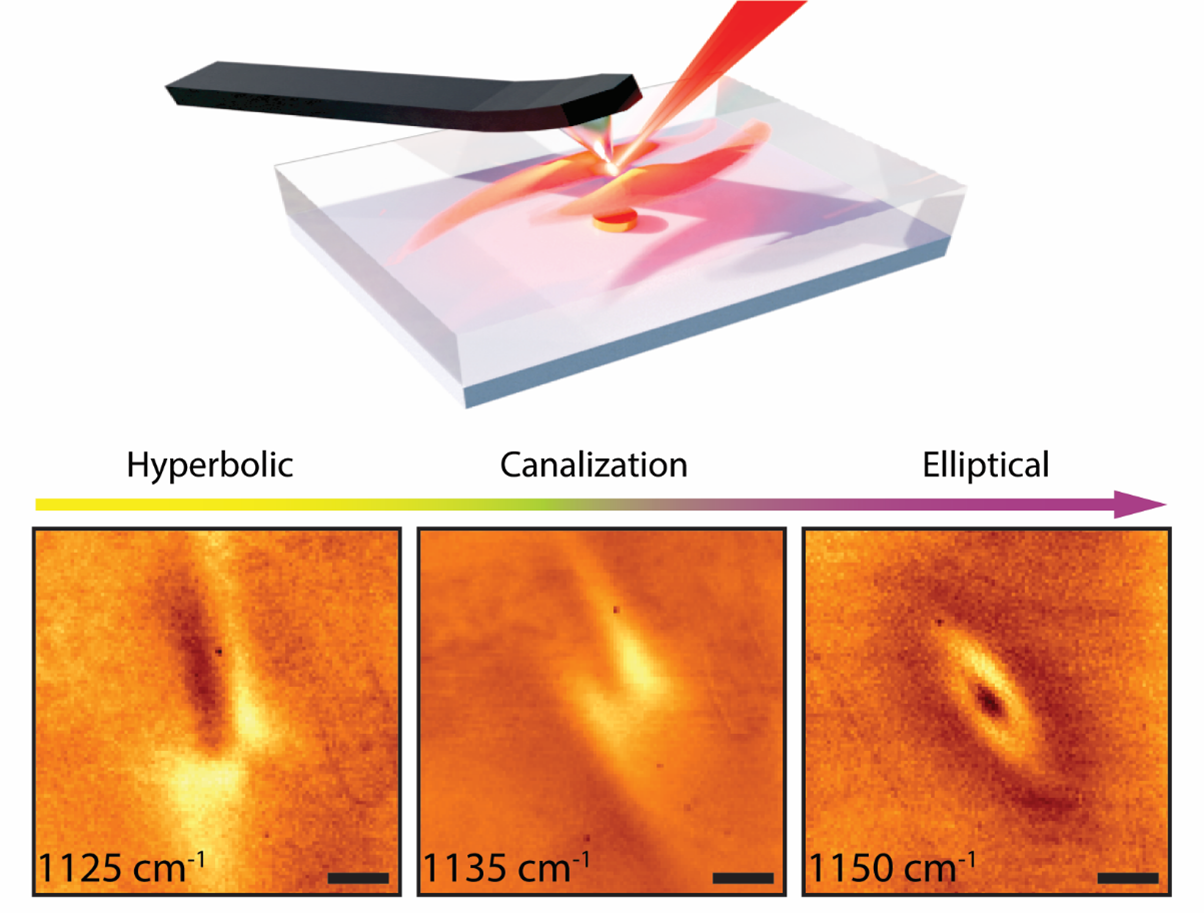Researchers from the National Graphene Institute at the University of Manchester and the University of Oviedo have discovered a hitherto unknown light behavior in gypsum, a material more commonly used in chalk and building plaster, according to a recent study published in Science Advances.
 Light behavior in gypsum. Schematic representation of s-SNOM exciting and measuring phonon polaritons (top) and topological transition of shear phonon polaritons in gypsum (bottom). Image Credit: University of Manchester
Light behavior in gypsum. Schematic representation of s-SNOM exciting and measuring phonon polaritons (top) and topological transition of shear phonon polaritons in gypsum (bottom). Image Credit: University of Manchester
The scientists discovered an uncommon sort of wave called a shear phonon polariton in a two-dimensional version of the material. Phonon polaritons are light-matter hybrid waves formed when light interacts with atomic vibrations in certain crystals. They can pass through materials in unique ways and focus light into incredibly small volumes.
The researchers discovered that in thin gypsum films, these waves experience a topological transition, transitioning from hyperbolic to elliptical behavior and passing through a unique canalized state.
This transition allows scientists to control how light moves through the material.
The studies of shear phonon polaritons in previous studies were limited to bulk crystals in the hyperbolic regime. In our study we aimed to complement those initial findings with shear polaritons in a 2-dimentional material. And remarkably, we discovered that shear phonon polaritons in gypsum support a topological transition from hyperbolic to elliptical propagation, with canalization in between.
Dr. Pablo Díaz Núñez, Study Lead, University of Manchester
Dr. Díaz Núñez added, “Moreover, we were able to confine light to a space twenty-five times smaller than its wavelength and slow it down to just a fraction of its speed in vacuum, this opens up new possibilities for manipulating light at the nanoscale.”
The research further emphasizes the importance of crystal symmetry. Gypsum belongs to a low-symmetry material class, notably the monoclinic crystal structure, which results in asymmetric light propagation and energy loss, which is a key feature of shear polaritons.
These findings go beyond fundamental research into phonon polariton propagation and may support future developments in areas that require precise control of light, such as thermal management, sensing, and imaging beyond the limits of conventional optics. Furthermore, the study proposes gypsum as a novel platform for investigating advanced photonic concepts in developing domains such as non-Hermitian photonics.
Journal Reference:
Díaz-Núñez, P., et al. (2025) Visualization of topological shear polaritons in gypsum thin films. Science Advances. doi.org/10.1126/sciadv.adw3452.